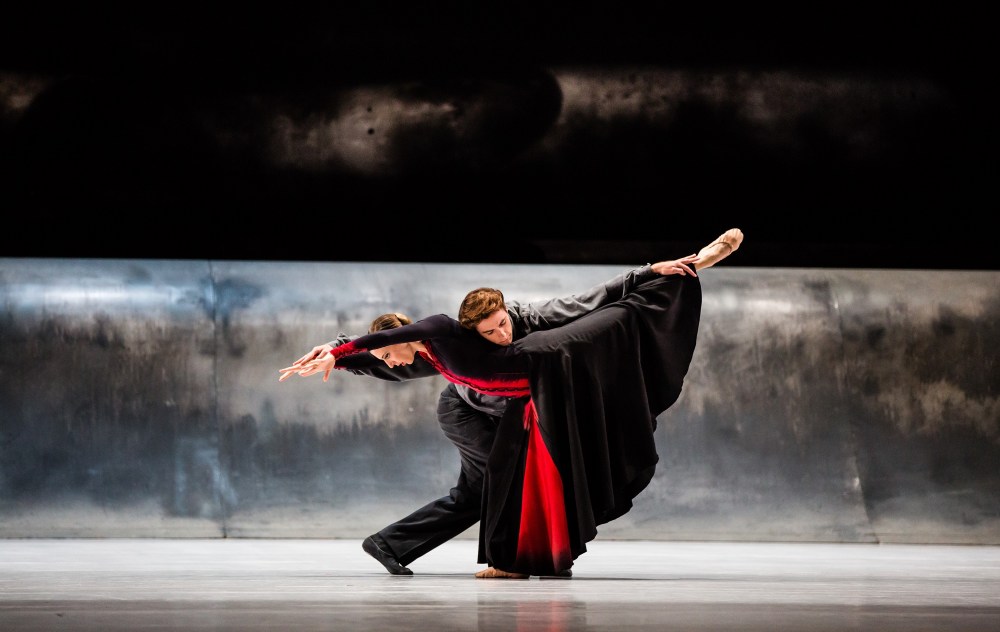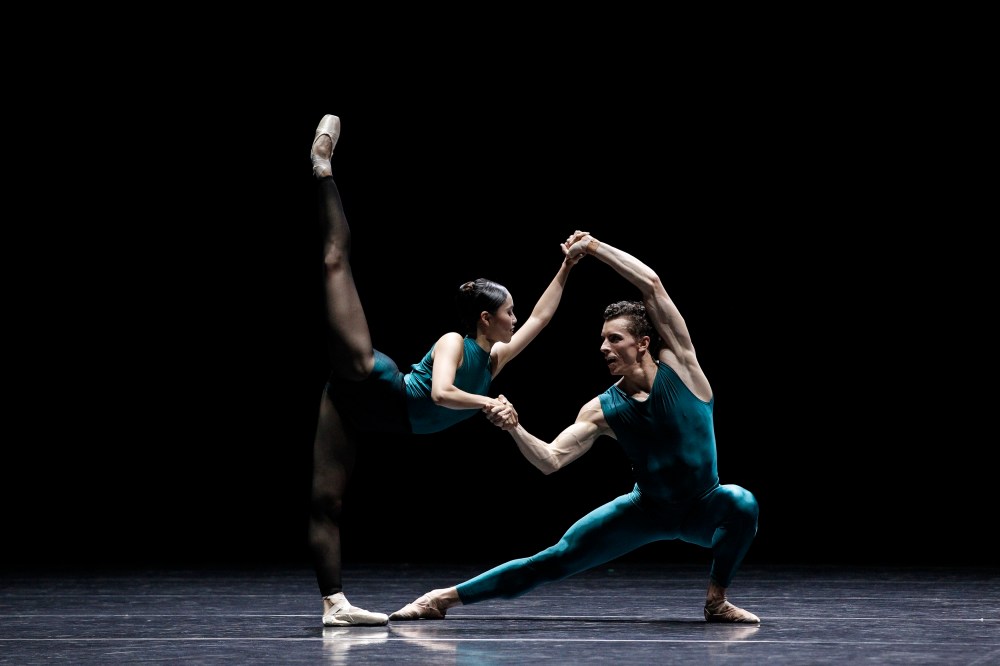The Australian Ballet, State Theatre, Melbourne, March 11.
VITESSE presents three certified hits from three of the biggest names in contemporary ballet and turns the dial up as the evening progresses. It starts with one of Jiří Kylián’s mysterious appeals to the heart, takes a charge through the cerebral and physical complexities of William Forsythe and finishes with Christopher Wheeldon being fast, flashy and entertaining.
Only the Wheeldon requires a cast of significant size– four leading couples and a corps of 18 – but Vitesse is nevertheless a meaty program, and one that allows a closer-than-usual look at dancers at the lower end of the rankings. On opening night Kylián’s emotionally charged Forgotten Land, for instance, had three corps de ballet members and two coryphées among its six couples. At the curtain Ella Havelka (from the corps) had a smile radiant enough to light the auditorium, and why not? She looked wonderful in Kylian’s passionate, swooping choreography, as did the full cast.

The AB has an affinity for Kylián and on opening night Forgotten Land (1981), an abstract dance that evokes life’s joys and sorrows, was the most fully realised (it was staged by Roslyn Anderson, the Australian-born former AB and Netherlands Dance Theatre dancer who had a long association with Kylián as his assistant). The curtain rises on a vast tempest-tossed landscape (by John McFarlane) and the desolate sound of wind. Six couples are buffeted by the elements, bending, quivering, swaying and challenging but not giving in. There are intimations of struggle, defiance and hope in this paean to resilience and to the deep connection people have with their own country, no matter how treacherous. In the opening night cast of 12, new senior artist Brett Chynoweth made an indelible impression with the fierce clarity of his attack.
Once upon a time the audience used to jump out of its skin at the first blast of Thom Willems and Lesley Stuck’s tough-as-nails electronic score for Forsythe’s In the Middle, Somewhat Elevated. Not so much now, even though Willems travels around supervising the sound. He was in Melbourne, and also visited New Zealand recently for Royal New Zealand Ballet’s performances. Have the Occupational Heath & Safety police been on the case? If so, they haven’t helped. (I do admit that in Auckland, where I saw RNZB, the opening did provide a gratifying kick.)

Putting In the Middle on the bill is one of those crazy-brave things companies can’t resist. It is rightly considered a landmark work, one that showed how ballet could be very, very bolshie and sexy while being ultra classical. With a twist. Despite being nearly 30 years old, In the Middle still has the ability to disturb one’s equilibrium (a marvellous solitary boo from the stalls on Melbourne’s opening night proved that) as six women and three men take ballet to the wilder outskirts of town with way off-centre balances, split-second changes of direction, sinuous torqueing of the upper body and extreme extensions.
Not everyone in the AB’s first cast entirely captured the work’s formidable contrasts between action and stillness and thrust and resistance, but principal Kevin Jackson looked like a god and alone was worth the price of admission. Daniel Gaudiello, sporting a shorter, sleeker haircut, and Jarryd Madden were also thrilling. Soloist Madden was apparently a latish replacement for principal Chengwu Guo, who had been listed – indeed, as of the time of this writing was still listed – as being in the first cast with Jackson and Gaudiello. Maddyn might not be quite the star Guo is but he acquitted himself brilliantly. The women were a touch less persuasive, and a touch less is all you need for one to feel In the Middle hasn’t been conquered.
Guo isn’t injured, by the way, because he danced dashingly in Wheeldon’s DGV: Danse à Grande Vitesse. But he can look sometimes look a little undisciplined, something that will never, ever do for In the Middle. I’d like to see him do it though, and perhaps the Sydney season will provide an opportunity.
DGV is a large-scale hymn to going places as it evokes speed, travel and the momentum of technology. It couldn’t be called profound but it’s smart as paint and smartly danced by the AB, although without the drop-dead glamour New York City Ballet brings to it, a quality helpful to a work that’s essentially all surface.

It’s a terrific surface though, with the large corps suggesting the waves of departing crowds, the actions of a train in motion and the heady rush of groups in transit. Four strong pas de deux anchor DGV and Guo was responsible for some fancy fireworks, tossing off super-fast turns in a welcome injection of the speed that gives this ballet its title.
Nicolette Fraillon and Orchestra Victoria accompanied the first and third works with music that couldn’t be in greater contrast: Benjamin Britten’s intense, melancholy Sinfonia da Requiem and Michael Nyman’s perpetual-motion MGV: (Musique a Grande Vitesse).
Vitesse ends in Melbourne on March 21. Sydney, April 26-May 16.
A version of this review appeared in The Australian on March 14.